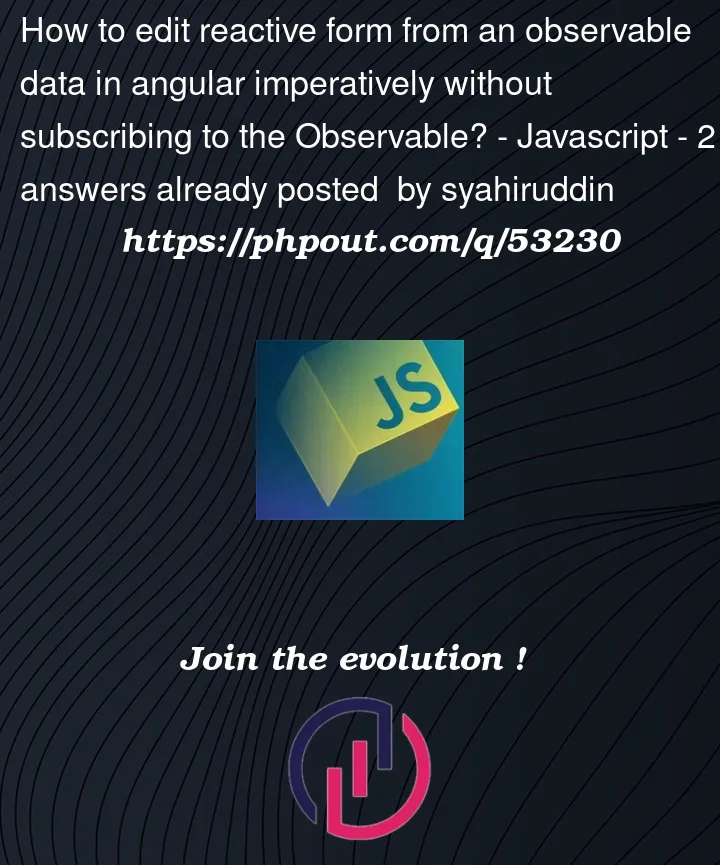Below is the process I’ve been using to subscribe and then update a reactive form based on observable data.
Maybe there’s a way to fix the problem without subscribing to the observable and changing the value.
@Component({
selector: 'app-my-component',
template: `
<form [formGroup]="myForm">
<input formControlName="name" />
<input formControlName="email" />
</form>
`,
})
export class MyComponent implements OnInit {
myForm: FormGroup;
constructor(private fb: FormBuilder, private ds: DataService) {}
ngOnInit() {
this.myForm = this.fb.group({
name: '',
email: '',
});
ds.data$.subscribe((data) => {
this.myForm.setValue({
name: data.name,
email: data.email,
});
});
}
}




2
Answers
generally a way to eliminate of subscriptions is to use async pipe in wrapper
and the form itself can handle user update inside of NgOnInit or ngOnChanges(if there may be several updates and it is important to set value for the form in this case)
note: some very bleeding edge features of angular are used in this example. it is possible to follow the same pattern but without every feature used
Your code doesn’t have any problem. Since you have to populate a form with backend data, you MUST subscribe to fetch your data.
HTTP Requests using Angular
HttpClientresults in an RXJS Observable, so the correct way to retrieve its holding data is performing a subscription.